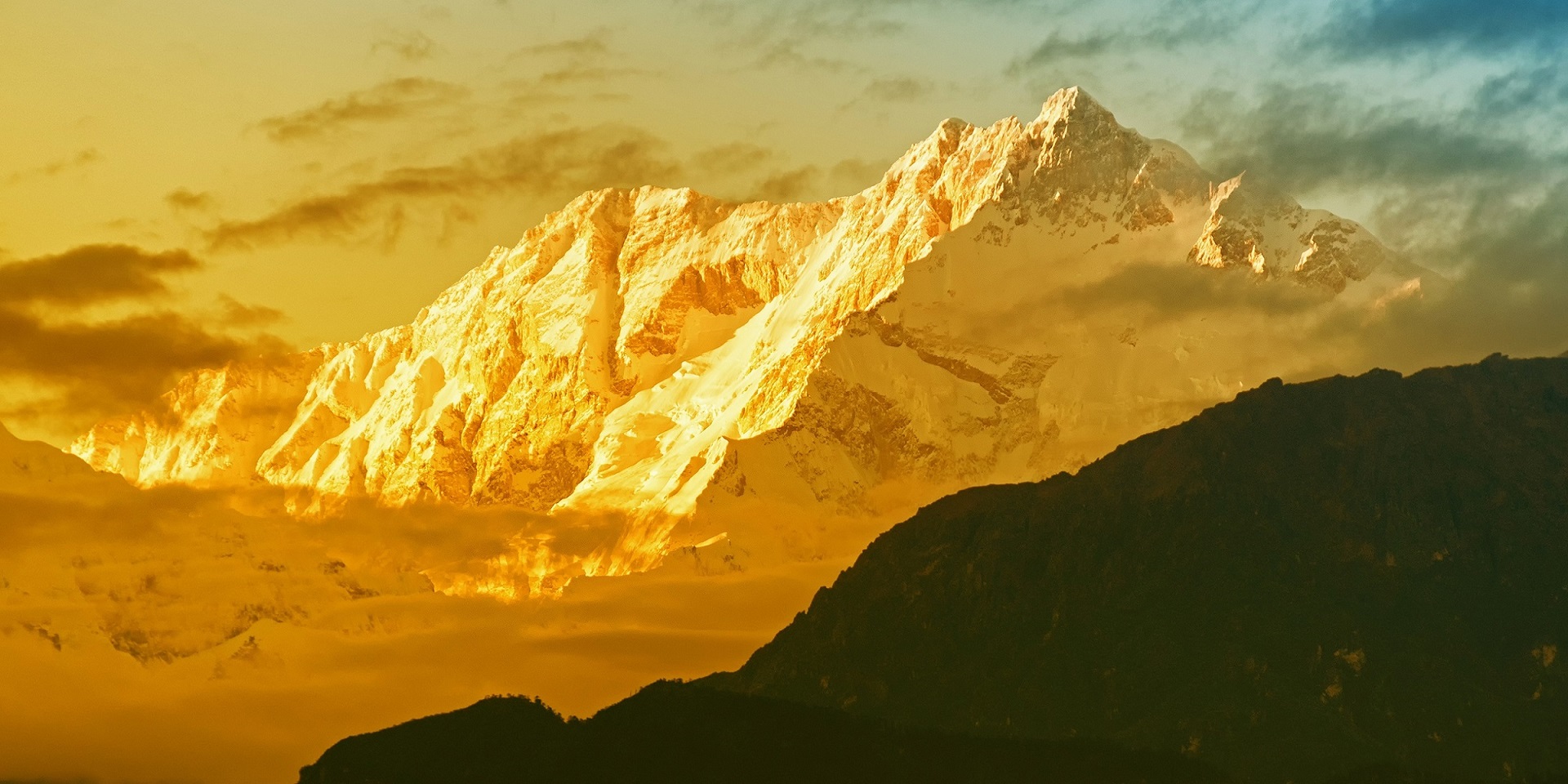
Sikkim
Sikkim, is a state of India, having joined India as her 22nd state in a referendum conducted in 1975. The state borders Tibet in the north and northeast, Bhutan in the east, Nepal in the west, and West Bengal in the south. Sikkim is the least populous and second smallest among the Indian states. As a part of the Himalayas, Sikkim is notable for its biodiversity, including alpine and subtropical climates, as well as being a host to Kanchenjunga the third highest mountain in the world.
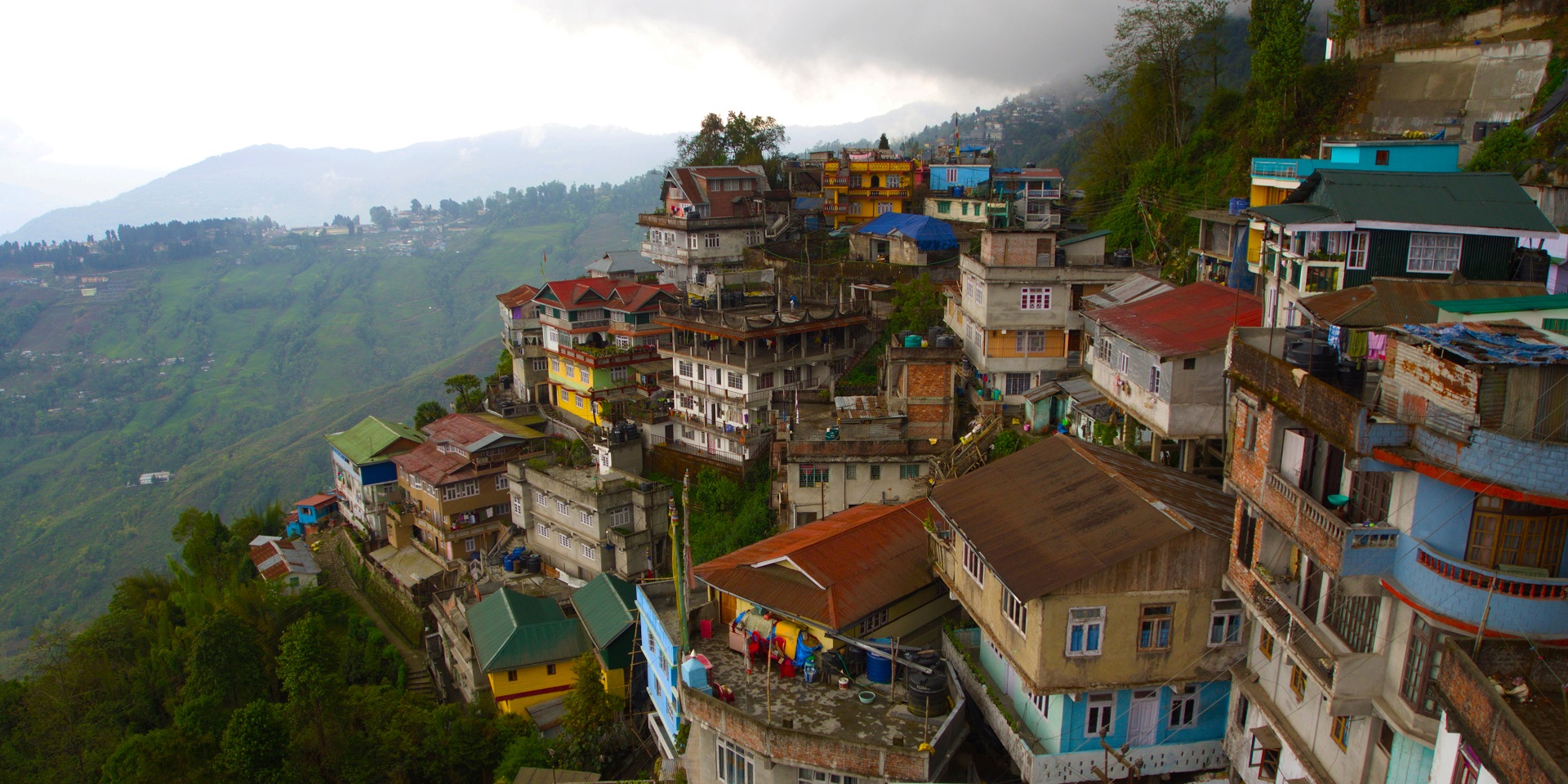
Gangtok
Gangtok is the capital of Sikkim with a population of about 100,000. Situated at an elevation of 1,650m, Gangtok is the tourism hub of Sikkim with most tourists making it the first stop before exploring the rest of the state.
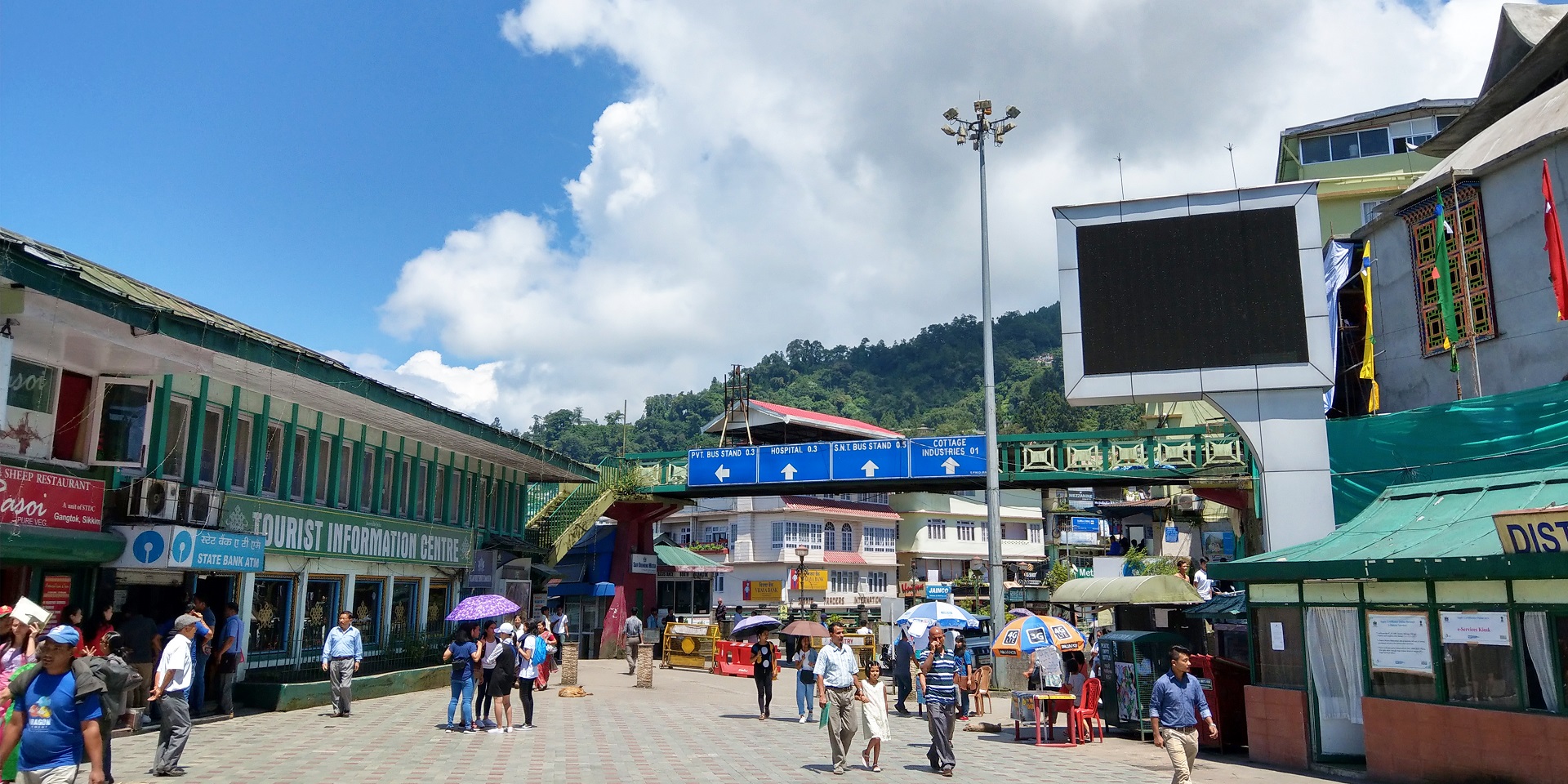
MG Marg
The town center and main marketing area for Gangtok, MG Marg bustles with activities and shops and is a good stop to charge up and pick up supplies before heading out of the capital.
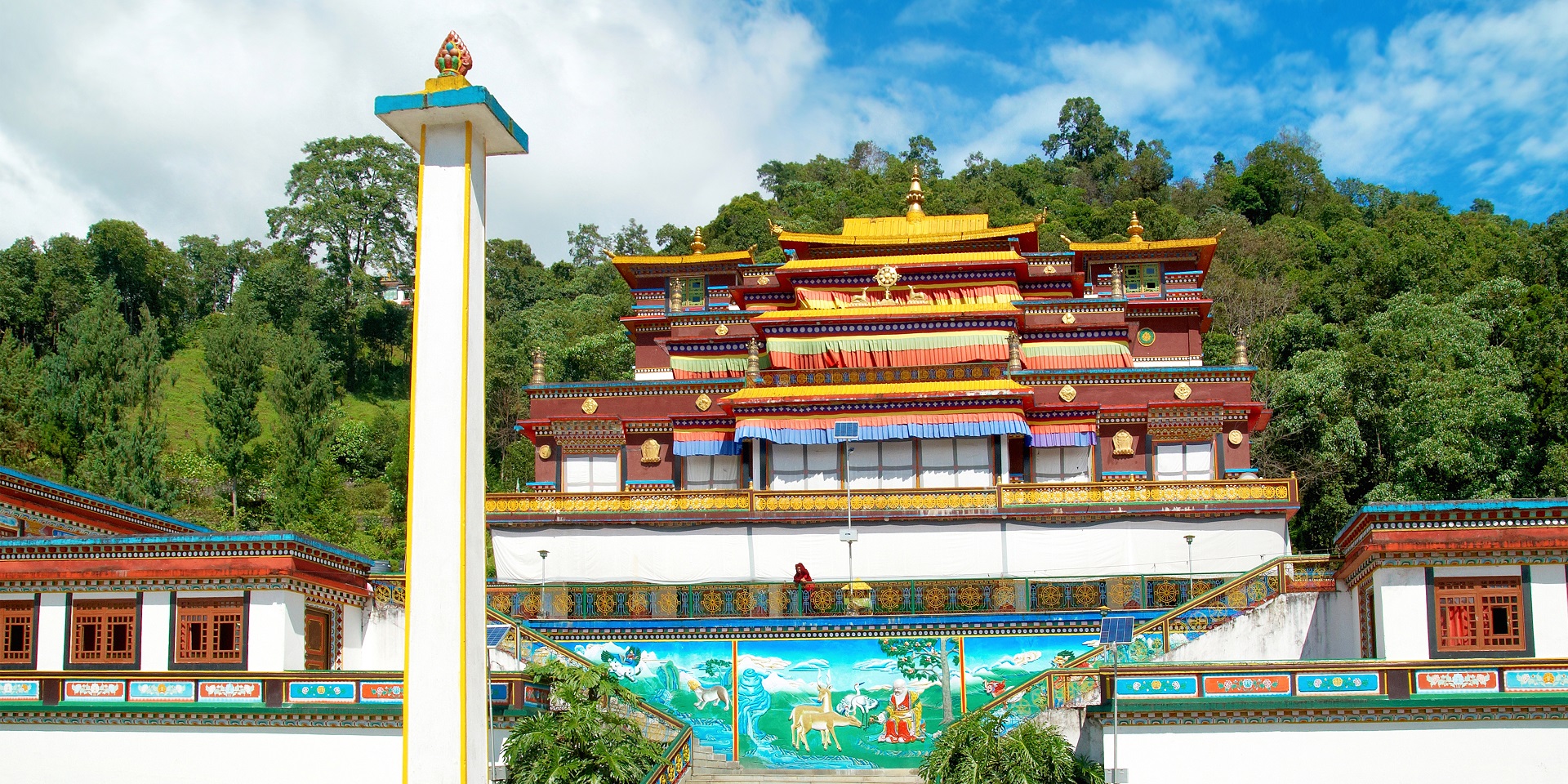
A Buddhist Monastery in Sikkim
Tsuklakhang Royal Chapel
Tsuklakhang Royal Chapel, home to over 100 young monks preparing for their higher education in Nyingma Buddhist studies. The Tsuklakhang Trust, which was created by Chogyal Wangchuk Namgyal, sponsors all of these boys, many of whom come from poor families, giving them not only a place to live and a traditional monastic education, but also sending them for Shedaor college studies. Upon their graduation, they go on to other monasteries as monks and teachers. The Tsuklakhang Trust is today one of the most dedicated and highly regarded charitable organisations for preserving and promoting a traditional monastic education in Sikkim.
Namgyal Institute of Tibetology
Founded by Chogyal Tashi Namgyal in 1957, the Namgyal Institute of Tibetology promotes research in Mahayana Buddhism and the language and traditions of Tibet. It has one of the world's largest collections of rare books and manuscripts on Mahayana Buddhism.
Originally dedicated to Tibetan Buddhist studies, the institute houses a world-famous collection of Buddhist manuscripts and thangkas. Today the institute’s focus is on the documentation and presentation of Sikkimese cultural and religious heritage.
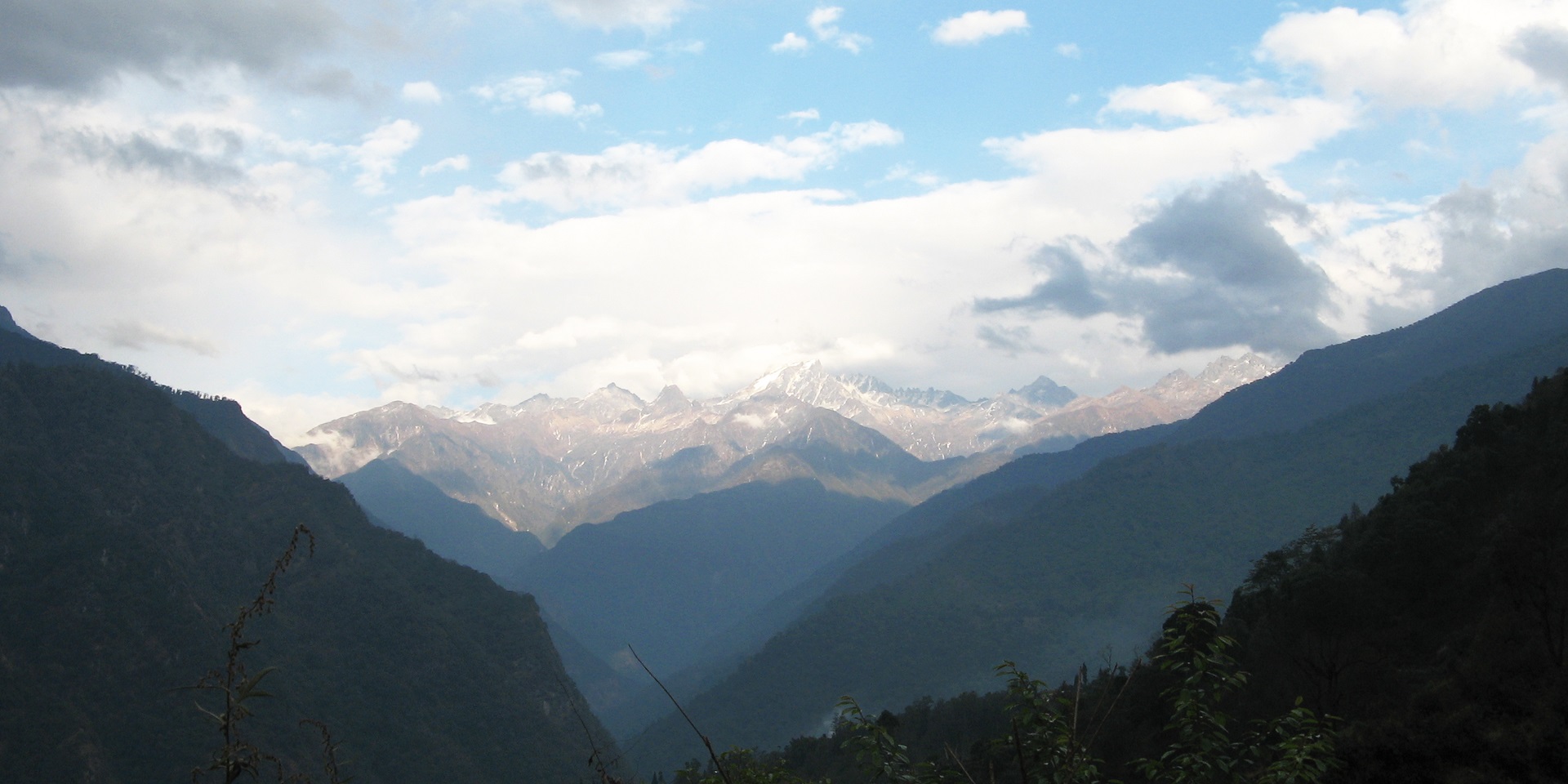
View along the way to Dzongu
Dzongu and Hee-Gyathang Monastery
Dzongu is a land only recently opened to visitors and it currently lies largely in the UNESCO World heritage site of Mixed category – Culture and Nature- the only one of its kind in India.
The Hee-Gyathang Monastery suffered some major damage in the 2011 earthquakes that hit the region. Today this simple monastery is a wonderful example of the community that pulled together with limited external aid to restore its walls and frescoes. The Rotary Club South, of Sikkim played a major role in its help for funding of restorative work. Visitors can chit chat with locals to exchange stories on the close community driven lives of the people of the region.
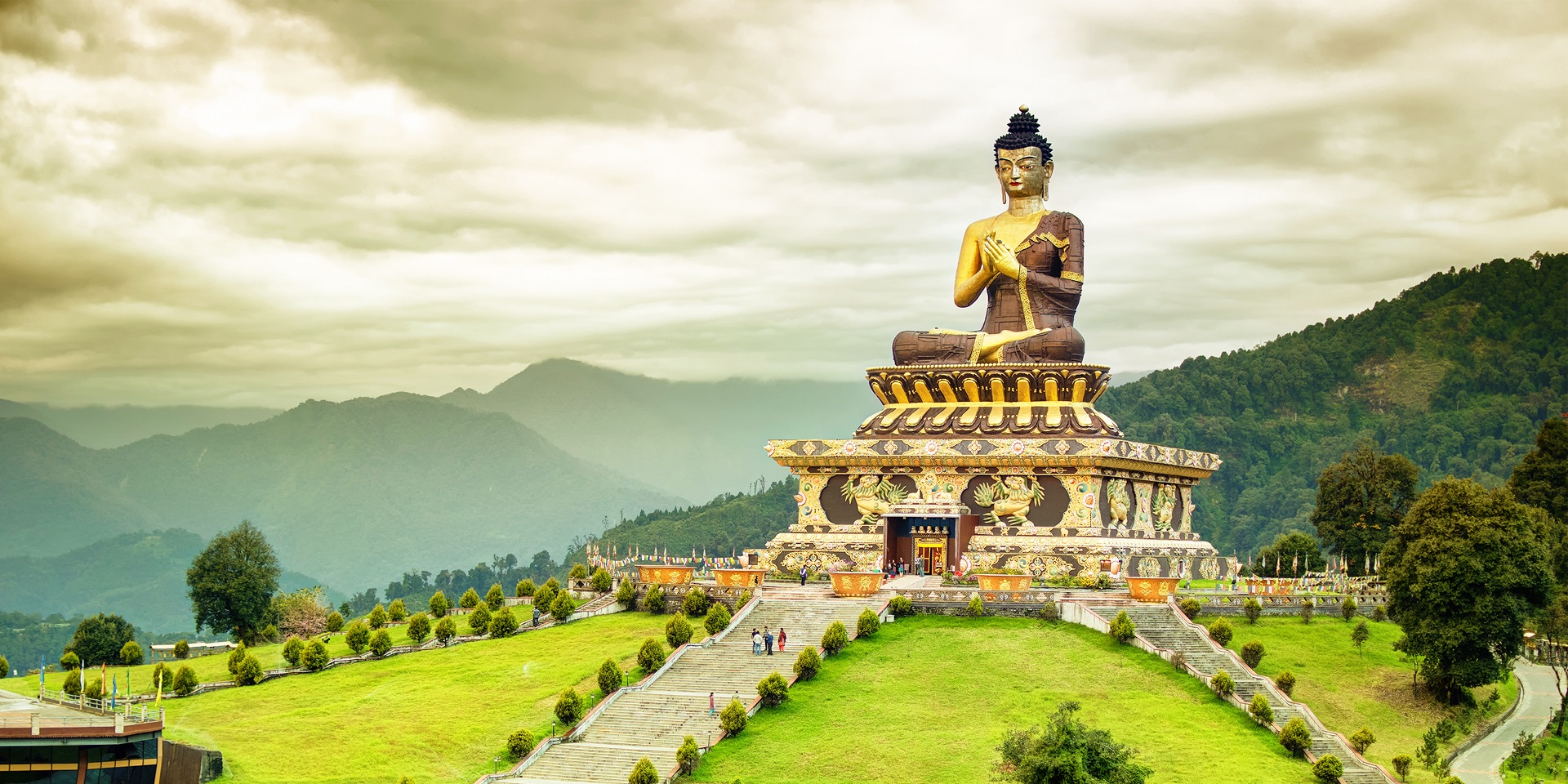
Tathagata Tsal (Buddha Park)
Forming an arresting vanguard to the mighty peaks of Mt Narsing and towering above all else, peaceful and poised, the majestic statue of the Tathagata commands the heart of the Tsal while the pulse of its influence throbs throughout the hills of Rabong.
The statue itself is 98 feet in height; the inclusion of the thri (pedestal or the lotus throne) elevates it to a total height of 137 feet. The proportions of the statue were taken from the Gega Lama, the authoritative Tibetan manual for religious artwork.
Made of 60 tonnes of copper and three-and-a-half kilogrammes of gold, the statue employs the repoussé technique, one of the oldest metal-working practices in the world. Most Buddhist artworks depict the Buddha in a meditative pose while his hands perform various mudras. The statue at the Tsal depicts the sage in the Dharmachakra mudra.
The Dharmachakra mudra is formed when the thumb and index finger of both the hands touch at their tips to form a circle. This circle symbolises the Wheel of Dharma which was set in motion when the Buddha gave his first sermon at Sarnath.
The entire complex of the Tathagata Tsal is dotted with important structures. The red-domed Congregation Hall, which can seat up to 2000 people, is one of the biggest venues in Sikkim built solely for the purpose of religious convocations. At the Tongchoe Lhakhang, visitors can light choemis (butter lamps) in memory of their loved ones.
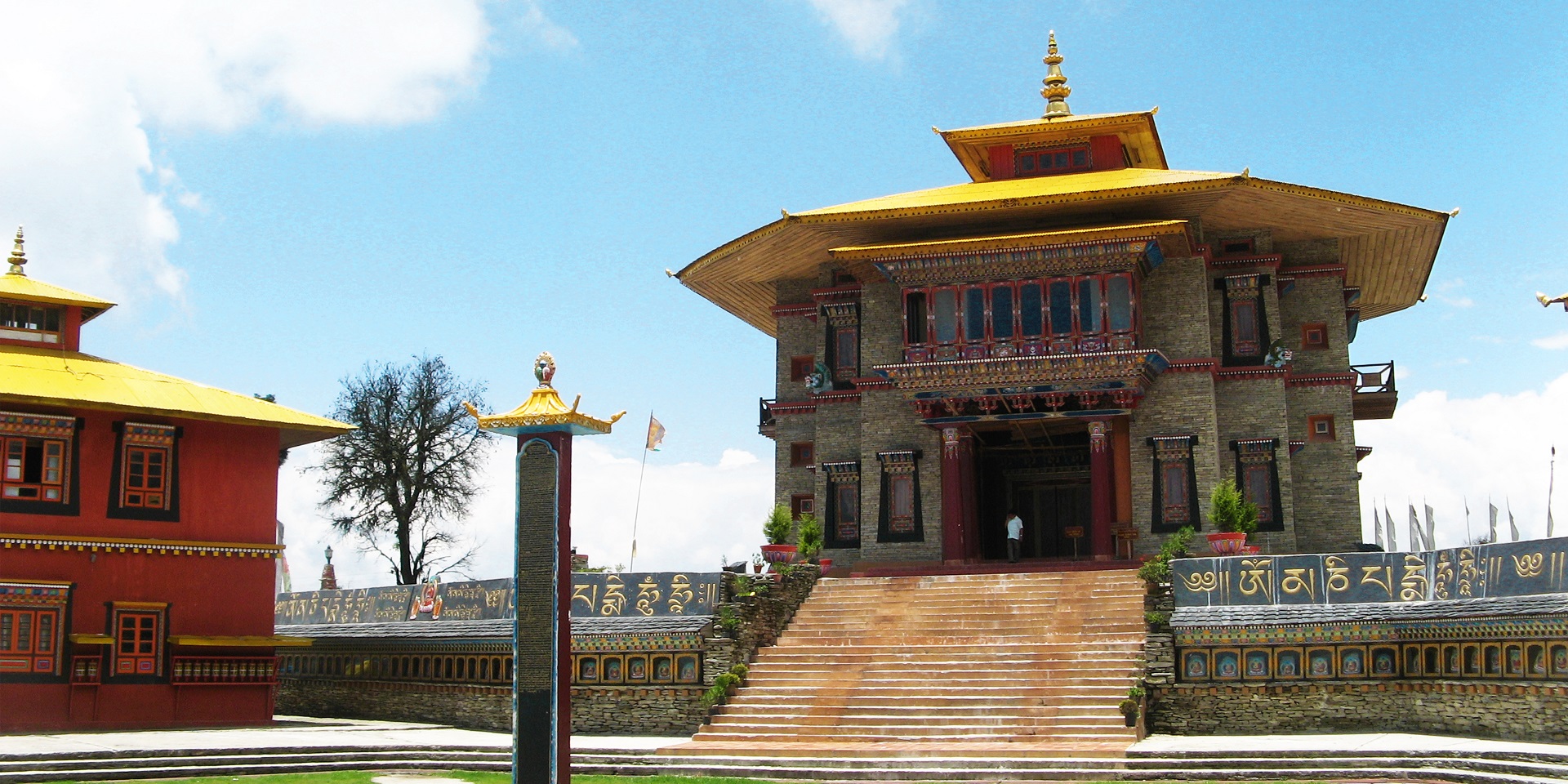
Mane Choekerling Monastery Complex
The Mane Choekerling Monastery Complex comprises of the Karma Thekcheling Donkun Duppai Gatsal Monastery, the Mani Lhakhang and Sheda (monastic school). Architecturally, gonpas form some of the most striking structures, and as the seat of Buddhism, they exert an immense influence on the daily lives of Sikkimese Buddhists. The harbingers of the religion from Tibet first laid the foundations of the faith in Sikkim by building gonpas throughout the state.
The Karma Thekcheling Donkun Duppai Gatsal is a handsomely designed gonpa. The rinche surgey or the eight-corner monastery uses local materials like stone and wood handcrafted by local artisans. This form of architecture is the oldest of its kind to be found in Sikkim. A set of Buddhist deities including the Buddha, Guru Padmasambhava and Chenrezig are housed within the three floors of the gonpa.
The Mani Lhakhang or the prayer wheel hall stands just beside the Karma Thekcheling Donkun Duppai Gatsal. The traditional hall is visited by pilgrims on a daily basis, but traditionally Mani Lhakhangs hosted Buddhist nuns and old women who would recite prayers and meditate.
With the belief that a monastery is the bedrock of religion, customs, language and culture, the Mane Choekerling Development and Management Committee is also looking at establishing the Karma Thekcheling Donkun Duppai Gatsal as an important centre for study of Buddhist philosophy in Sikkim. The monastery’s mission is far-reaching and apart from religious edification encompasses the proliferation of Buddhist art, architecture,culture, customs and language.
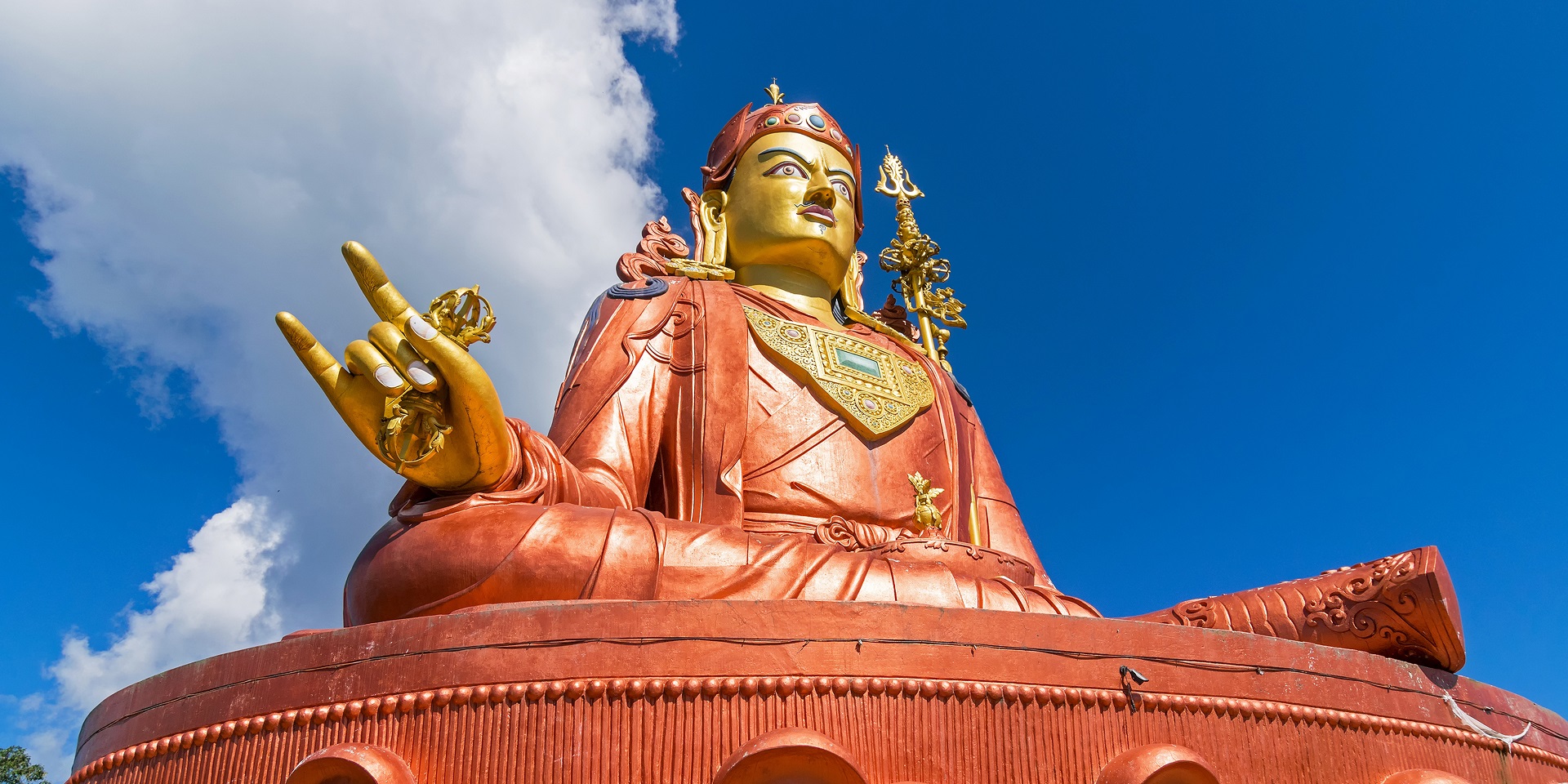
Samdruptse Hill Namchi
Samdruptse literally means 'wish fulfilling hill' in the Bhutia language. A unique, awe inspiring and gigangtic 135 feet high statue of Guru Padamasambhava is installed atop Sampruptse. It is the highest statue of Guru Padamasambhava in the world. His Holiness the Dalai Lama laid the foundation stone of the statue in October 1997. It took nearly three years to complete the statue.
Guru Padmasambhava, also known as Guru Rimpoche, blessed Sikkim more than 1200 years ago. This statue is therefore a fitting tribute to this patron saint of Sikkim. The statue funded by the State Government was constructed and installed by His
Eminence Dodrupchen Rimpoche and members of his Chorten trust. The message of love, compassion, peace and harmony is aimed to spread throughout the world from this historic hill.

Khangchendzonga (the world’s 3rd highest mountain)
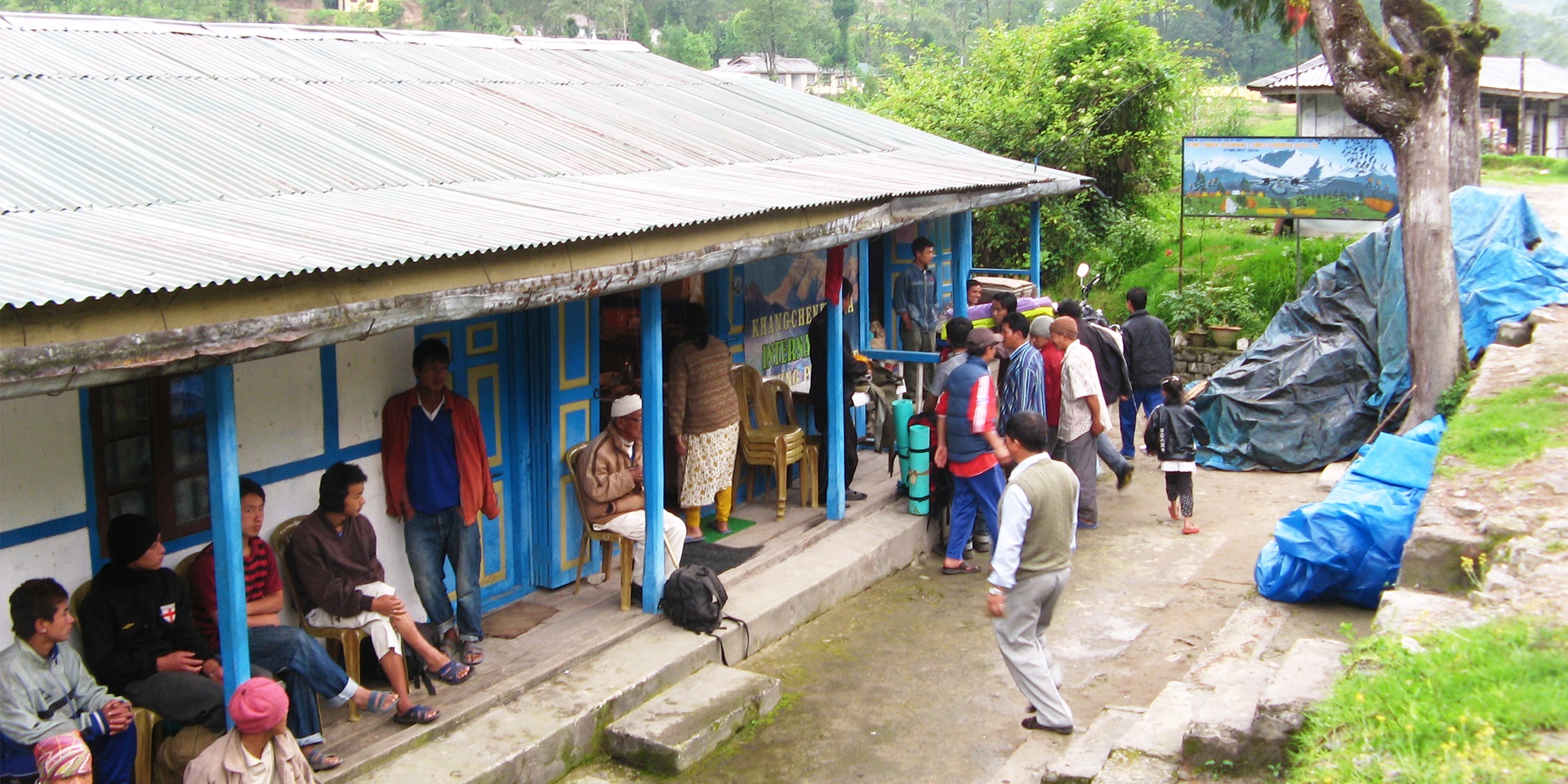
Mountain trekkers are waiting for trekking assignments
Pelling
After Gangtok, Pelling is probably the second biggest tourist destination in the state. Wonderfully pristine, the place offers breathtaking views of the Khangchendzonga (the world’s 3rd highest mountain) and surrounding ranges, as well as the easy access it provides to tourist spots in the area. Although Pelling town can be viewed as urban, the area is still largely pristine with alpine vegetation and numerous waterfalls. In the months of winter, Pelling is sometimes covered under a blanket of snow.
Pemayangtse Monastery
Planned, designed and founded by Lama Lhatsun Chempo in 1705, the Pemayangtse Monastery is one of the oldest and premier monasteries of Sikkim, and the headquarters of the Nyingmapa order of the Tibetan Buddhism.
The monastery draws its name from 'padma yang tse' which literally translates into the 'sublime perfect lotus'. Built as a three storied structure, the monastery depicts paintings on its walls and statues of saints and Rinpoches, deified in various floors.
In the main prayer hall (1,500 square feet (140 m2) area), the Dukhang or Lakhang, the main temple, has colourfully painted doors and windows which depict Tibetan designs. The main statue of Padmasambahva (also known as Guru Rinpoche who revived Buddhism in Tibet and was also the propagator of Vajrayana or tantric form of Buddhism is seen here in his wrathful form as Dorje Bhurpa Vjarakila with multiple heads and arms.
There is a seven-tiered painted wooden structure, portraying Guru Rimpoche's Heavenly Palace known as "Sanghthokpalri" also spelt "Zandog-palri" on the top floor of the monastery.
Sikkim is also a land of festivals. For example, every year Pang Lhabsol is celebrated at Rabong, South Sikkim. Pang Lhabsol, a festival unique to Sikkim is celebrated to offer thanks to Mt Khanchendzonga, the Guardian Deity of Sikkim and to Yabdu, the Supreme Commander.
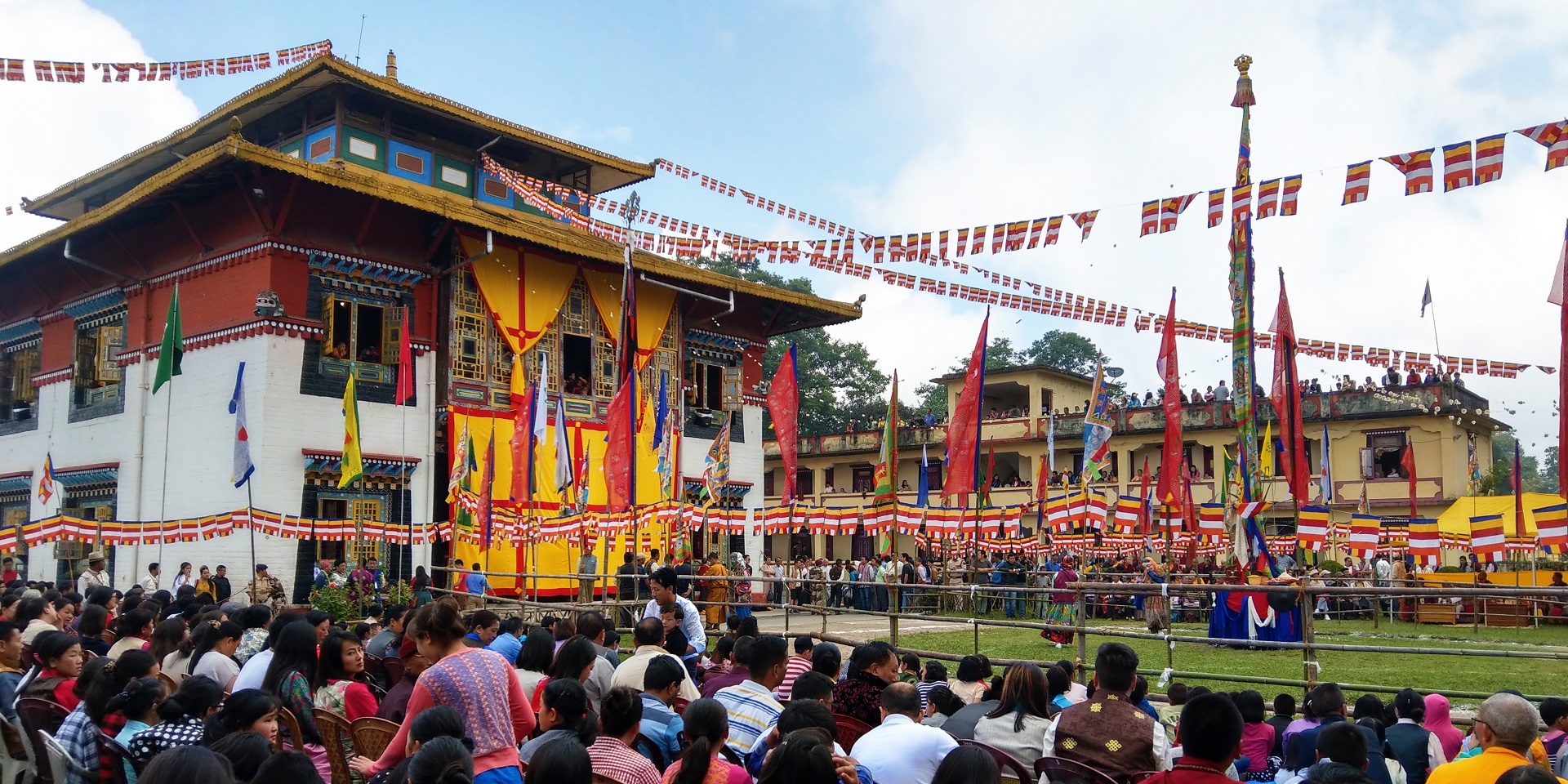
Pang Lhabsol, a popular festival in Sikkim.
Customise your tour by telling us what else you want to do.
Talk to our travel representative for more information now!
< You may read about our Disclaimer, Privacy and Data Protection Policy, Terms & Conditions and FAQs here. >




